There are many types of owls featured in the original “Harry Potter” books, such as the horned owl, screech owl, barn owl, and the great gray owl… However, the one that can travel between the magical and real worlds is a giant gray-black owl, often referred to as the Snowy Owl.
The Snowy Owl is one of the three main species in the owl family, which includes members of the owl-like raptors. Like other owl species, the Snowy Owl (Bubo scandiacus) possesses excellent vision and can detect small rodents from hundreds of meters away while perched in trees.
Additionally, the Snowy Owl has the best hearing among all owl-like raptors. Just a small sound made by a mouse beneath thick snow can alert the Snowy Owl, allowing it to swoop down and catch it, leading to its nickname “The Night Assassin.”
The Snowy Owl boasts superb hearing and can accurately pinpoint the location of its prey, functioning like an extremely powerful biological radar. So, where does its super hearing come from?
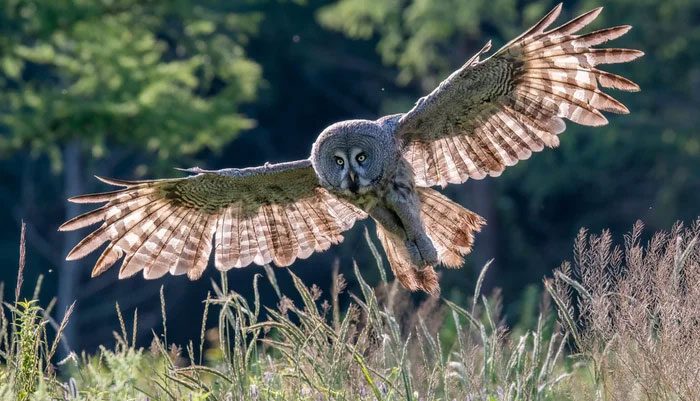
The Snowy Owl has exceptionally sensitive hearing.
The sharp sense of hearing of the Snowy Owl benefits from its “large face” resembling a round cake. Its face is covered with many fine, sturdy feathers that concentrate around the eyes and radiate outward, forming a “large face.” This unique structure enhances its ability to detect sound waves.
Similar to cats, the Snowy Owl has forward-facing eyes, which help them better observe prey directly in front of them. Furthermore, their necks can rotate about 180 degrees, allowing them to scan their surroundings without needing to turn their bodies.
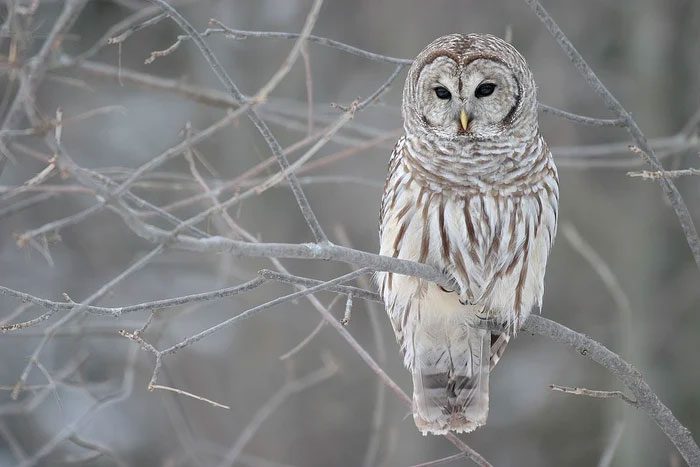
The Snowy Owl has forward-facing eyes.
This owl species possesses the largest ears among all bird species, but instead of having ear flaps like many other animals, they are covered with thick feathers. The Snowy Owl also exhibits this trait, but its ears are asymmetrically arranged, with one ear higher than the other.
The right ear canal is narrower than the left, allowing both ears to receive sounds from both sides simultaneously. Additionally, the ear bones of the Snowy Owl are highly developed, enabling it to triangulate sound waves, increasing its ability to differentiate sound signals.
Thanks to its large “face,” ears, and such unique eyes, the Snowy Owl stands out as one of the most powerful species among owl-like raptors.
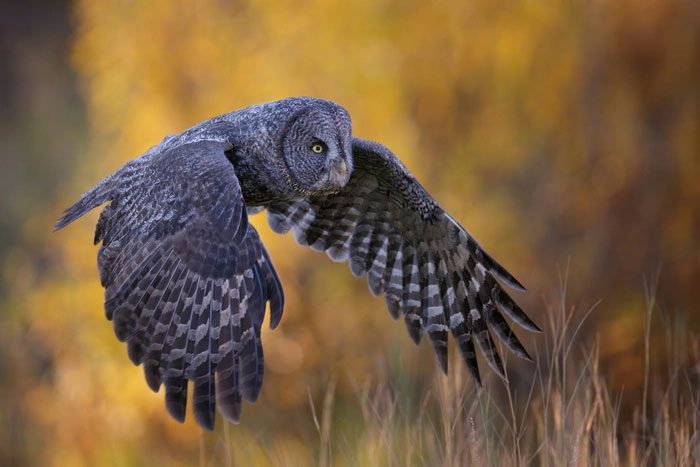
The ears of the Snowy Owl are asymmetrically arranged.
The feathers of the Snowy Owl are very fine and soft, playing a role in reducing noise while flying. As a result, very few prey can escape when the Snowy Owl hunts.
The wingspan of adult Snowy Owls can reach about 1.55 meters, and their height can exceed 70 cm. However, they are quite lightweight, with an average weight of 2 to 3 kg, while female owls can weigh up to 4 kg.
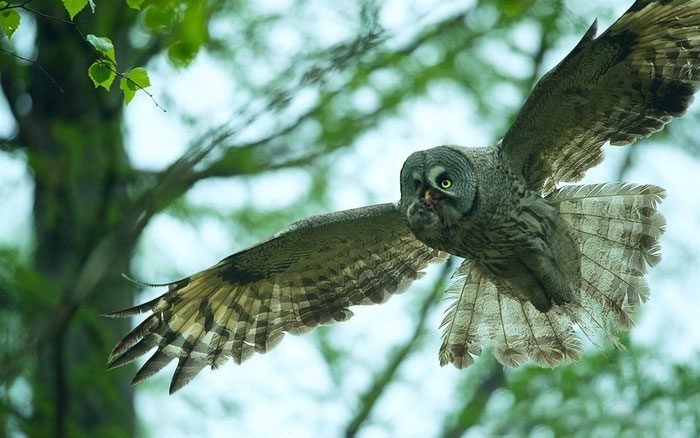
The feathers of the Snowy Owl are very fine and soft.
The reason why the Snowy Owl has a large appearance but a very light weight is due to its small skeleton and extremely fine and soft feathers. Its large body is supported by plumage, almost as if wearing an oversized coat.
With this thick coat, they can withstand extremely cold weather. Unlike other migratory birds that move south during the harsh winter, Snowy Owls choose to stay local for the winter, making them a typical resident bird.
Unlike the strategy of accumulating fat to withstand the cold in winter, the feathers of Snowy Owls thicken enough to combat bone-chilling temperatures, and their feet are also covered in feathers, as if they are wearing fur boots.
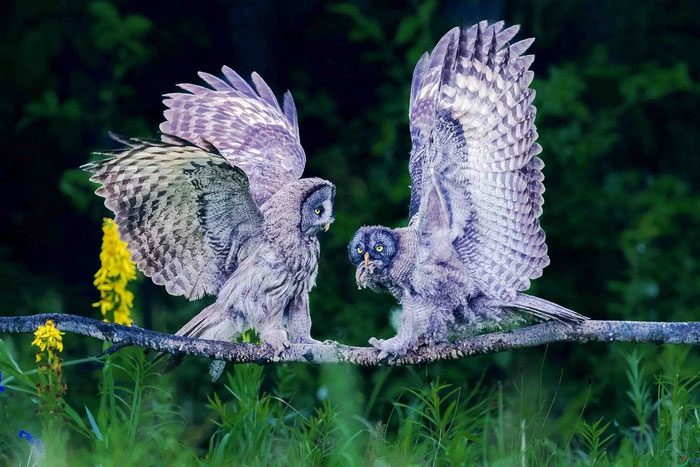
The feathers of the Snowy Owl will thicken enough to withstand the bone-chilling cold.
Despite their large size, the movements of the Snowy Owl are very agile and precise. In the freezing winter forest, many rodents hide beneath the snow, camouflaged and excellent at concealing themselves.
However, the Snowy Owl can not only detect prey beneath the snow using its biological radar system, but it also possesses the strength to plunge through the hard snow cover and seize prey hiding underneath.
The Snowy Owl often perches on treetops, scanning the forest below for signs of prey. Upon spotting its target, it immediately launches from the tree and dives straight into the snow, with the impact force from these dives reaching up to 80 kg.
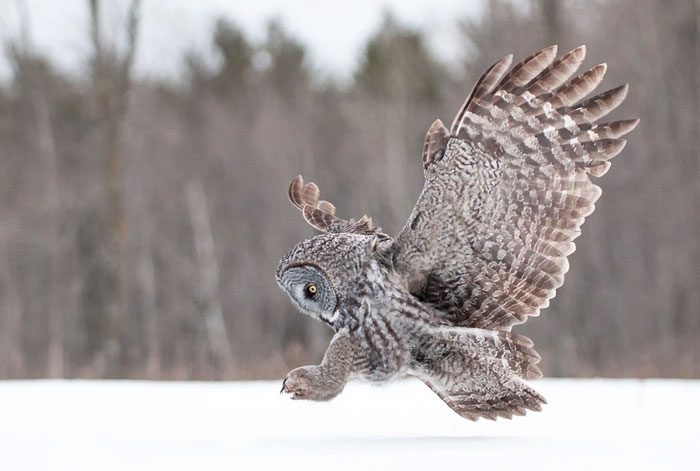
The wingspan of adult Snowy Owls can reach about 1.55 meters.
In fact, this species of owl is inherently fierce and has almost no natural enemies when fully grown. However, newly hatched chicks require careful care from their parents.
Snowy Owls are very devoted parents; after the chicks hatch and emerge from their shells, the female stays close to protect them while the male hunts and brings back food. Typically, the male tears the prey into smaller pieces to feed the chicks, only taking a small portion for itself to maintain strength for the next hunt.
Scientists have found that females in this stage can lose nearly 30% of their body weight within a month, while the chicks grow rapidly thanks to the selfless dedication of their parents.
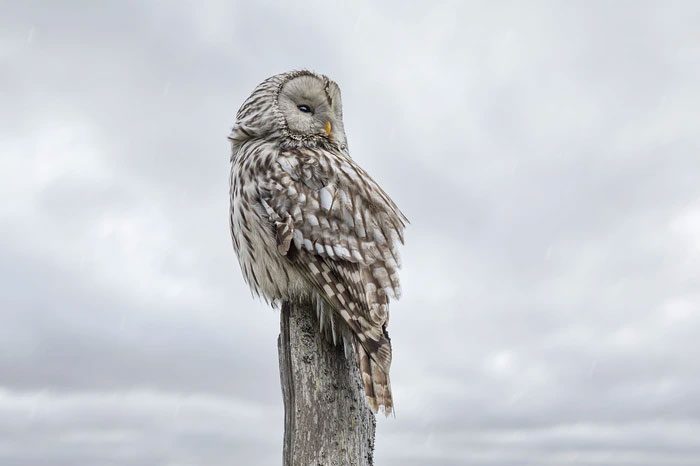
Snowy Owls are very devoted parents.
After three weeks, although the chicks still cannot stand on their own, they can move a short distance within the nest. They also gradually grow dark feathers on their faces and black bristles on either side of their beaks. After more than a month, the chicks will have fully developed wing feathers and can fly short distances.
This period is quite dangerous for the chicks, as the area around the nest can become filled with droppings, the scent of which may attract lurking predators.
Therefore, during this time, the parents will relocate the chicks to a safer place. However, during this process, some unlucky chicks may fall straight to the ground and die or be discovered by predators. Consequently, the survival rate of chicks in the wild is very low, at only about 20%.

















































